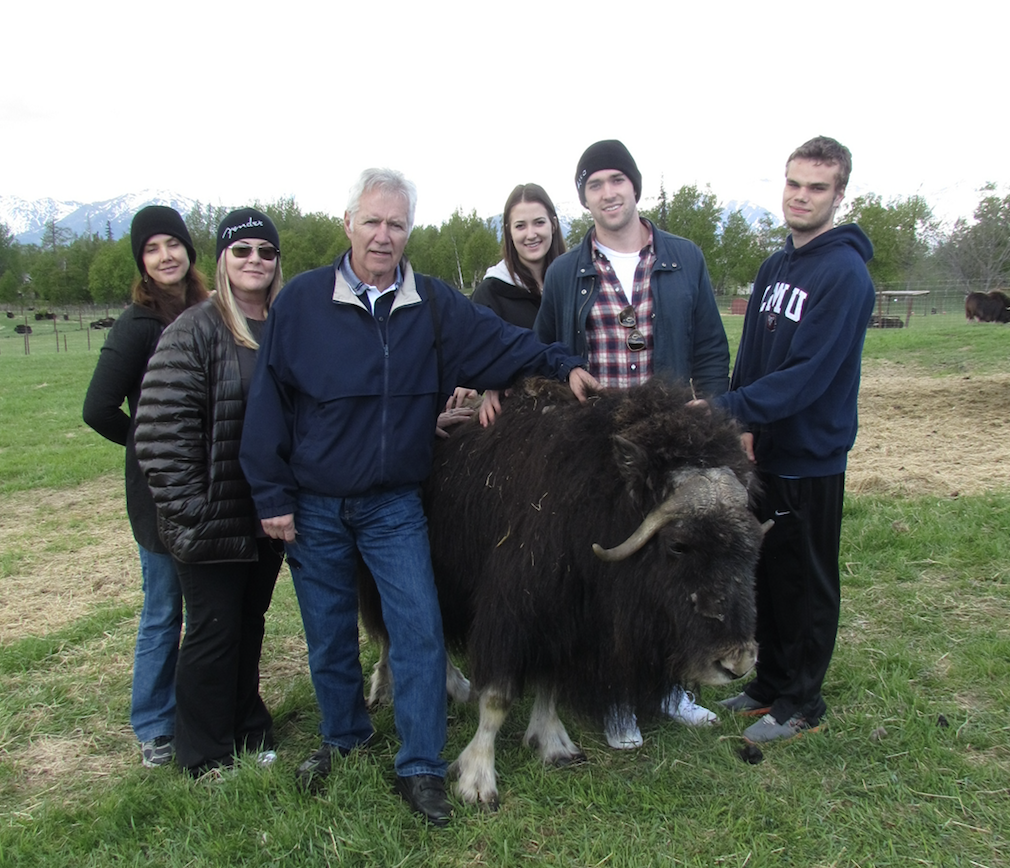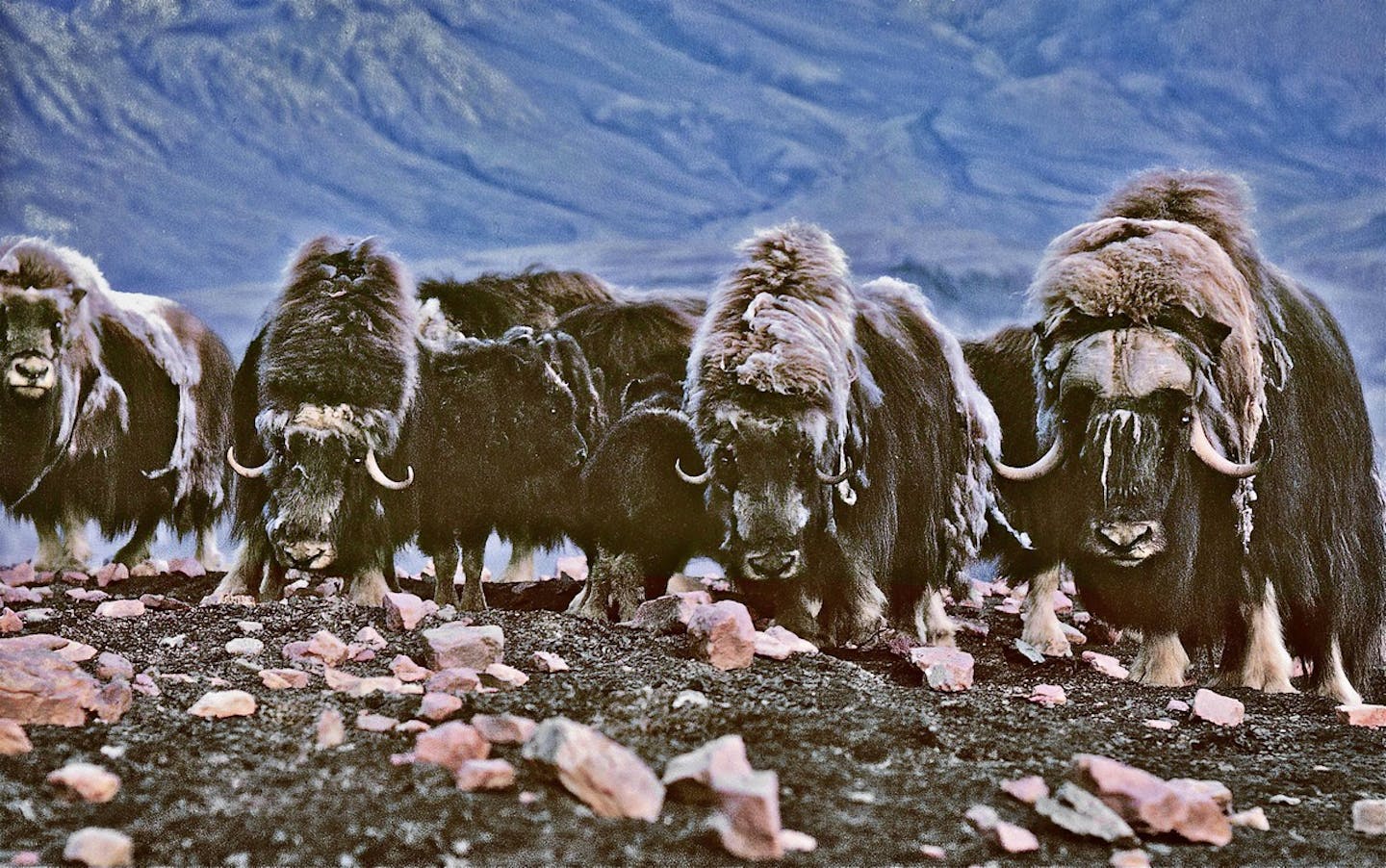The fascinating muskox and the late Alex Trebek
Amidst the many memorial tributes to Jeopardy’s beloved Alex Trebek are frequent references to his relationship with the Arctic muskox, his favorite animal. Though muskoxen have been around for about a million years, they seem cloaked in a mystery almost as mythological as their appearance. Who are these ancient beasts?
First of all, they have no musk and are not oxen. Looking somewhat like a cross between a buffalo and a yak, Ovibos moschatus are actually swift, agile, intelligent and playful members of the goat/antelope family, related closely to the Himalayan takin. A more appropriate name might be Oomingmak, the Inuit name for these “bearded ones.” One theory about the musk misnomer is that the name derived from explorers seeking royal sponsorship for expeditions to the Far North by describing these animals as a potential source of the precious base for perfume. The bulls do emit a scent when in rut, during which they battle other bulls - charging each other at speeds of up to 35 mph - for dominance and temporary possession of a breeding harem of cows.
Thereafter, the herd remains together through the nearly nine month gestation, calving and beyond, while the other bulls often form their own bachelor groups or wander in solitude. Muskoxen have been referred to as the ‘elephant families of the north,’ as the high intelligence and loyalties that characterize their social systems are so similar. In fact, their deep, guttural “roars” sound almost identical. (Do the rumbles of muskoxen vibrate across the tundra in the same way those of elephants communicate with other groups across the savannah, beyond the acoustic reach of human hearing?)
Although there were several varieties in their ancient ancestry, including a giant form, modern muskoxen appeared during the Pleistocene. With the ebb and flow of glaciers, they roamed both Arctic and temperate zones among woolly mammoths, aurochs, horses, red deer, stag-moose, reindeer and other megafauna - as well as sabertooth tigers and other predators of the time. It is thought that they may have survived the mass extinctions that occurred during the last Ice Age by finding ice-free access to grazing far away from prehistoric hunters, who were inclined to wipe out entire animal populations wherever they were found.
Both the muskox herds’ success against most predators and their vulnerability to human hunters is due to their defensive formations, in which they stand and form a protective circle around the young and weaker animals, with horns of both bulls and cows facing outward. (Even feisty calves, who practice running like the wind and head-butting rocks, have been known to take on large bears in defense of their mates.) It was their natural instinct to face threats to the herd and protect their families - and even their human caretakers - that Alex Trebek first found moving and inspiring about muskoxen. As was Alex himself, “Musk oxen are family oriented, and I like that,” he said.

Alex Trebek visiting the Musk Ox Farm in Palmer, Alaska. Image credit: Courtesy of Musk Ox Farm
He also liked their imposing beauty, “the way their furry coats wave in the breeze when they’re running,” and the precious cashmere-like underwool, called qiviut, that provides the warmth that enables them to thrive in extreme Arctic winter conditions before being shed each spring. The qiviut of domestic muskoxen has the potential to provide the basis for a lucrative fiber industry in the far north, and for decades, Alex Trebek has been a devoted supporter of The Musk Ox Farm in Palmer, Alaska, that maintains such a vision.
In the wild, muskoxen have long been very popular with trophy hunters due to the dramatic appearance of their massive, horned heads and the easy targets provided by their defensive formations. But far more threatening now is the climate crisis. Snow through which they once pawed now falls as freezing rain, covering the animals’ winter browse of grasses, sedges and lichens with an impenetrable sheet of ice. This has caused mass starvation events involving tens of thousands of reindeer and muskoxen, the Far North’s last remaining hoofed megafauna. Only now are we beginning to understand the vital contribution made by their trampling, grazing and fertilizing to maintaining the Arctic tundra and grassland vegetation as a vast carbon sink.
Those who know these wonderful, resilient animals are grateful to Alex Trebek for his decades of friendship and support for the farm, his role as signator of calf ‘adoption’ papers, and the touching personal connection with muskoxen that helped introduce their true nature to the public. His appreciation for their ability to survive in some of the world’s coldest and most isolated regions, largely through their protective family circle, is perhaps especially poignant now as a symbol of our most cherished relationships during a global pandemic.



